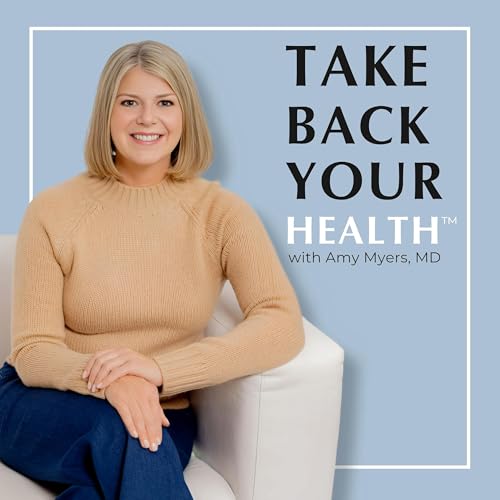When it comes to living a healthy, full life, you must take inventory of your daily routine—it can inform the current and future state of your health. This week, I'm joined by Dr. Leigh Erin Connealy, a leading expert in integrative medicine, who is known for addressing the root cause of disease, including cancer. We sat down to discuss cancer prevention, early detection, and how key lifestyle changes can treat and prevent disease. In this episode, you'll discover: Why Cancer Diagnoses Are More Common Today: Since 1990, there's been an 80% increase in cancer among young people especially. Dr. Connealy attributes this to a variety of factors—pollution in the air, water, and food supply, people leading more sedentary lives, and the rise of antibiotics—that weren't as prevalent decades ago. "It's toxic everywhere, and it doesn't matter where you eat, what you eat, it's present." How to Prevent Disease: In that same vein, there are steps you can take to help your body help you. It all starts with how you live your 24-hour day, says Dr. Connealy. As for what you can do to Take Back Your Health™? Address your emotional state, detoxify, go outside, exercise, boost your vitamin C intake, clock in quality sleep, eat a paleo diet, and limit daily stressors wherever possible. "Your body is miraculously made. It's constantly trying to take care of you," adds Dr. Connealy. Early Detection Signs: While Dr. Connealy says bloodwork doesn't typically reveal a cancer diagnosis, there are markers you should be cognizant of. If your C reactive protein ("a nonspecific marker for inflammation"), for example, is over 0.5, that is something to be weary of because "inflammation is the precursor to all diseases," says Dr. Connealy, who also emphasizes the importance of tracking levels of vitamin D, which influences over 3,000 genes. 00:00 Rising Cancer Rates: A Modern Epidemic 02:46 Dr. Connealy’s Personal Journey 09:47 The Importance of Prevention and Early Detection 15:30 Practical Steps for Health and Wellness 30:20 Understanding Hemoglobin A1C and Nagalase 30:52 Immune System and Hormone Testing 31:26 Cancer Profile and Liquid Biopsies 32:53 Bioenergetic Testing and Chinese Medicine 35:30 Tumor Microenvironment and Conventional Oncology 37:53 Integrative Approaches to Cancer Treatment 42:31 Low Dose Chemotherapy and Insulin Potentiation 47:22 The Role of Fasting and Lifestyle Changes 52:13 QT Scan: A Kinder Breast Evaluation Connect with Dr. Myers: Website: https://www.amymyersmd.com/ Newsletter: https://www.amymyersmd.com/ec/guide-to-leaky-gut Facebook: https://www.facebook.com/AmyMyersMD Instagram: https://www.instagram.com/amymyersmd/ Connect with Dr. Connealy: Website: https://www.connealymd.com/ Facebook: https://www.facebook.com/ConnealyMD/ Instagram: https://www.linkedin.com/in/leigherinconnealy/ Twitter: https://x.com/drconnealymd Podcast - Cancer Conversation: https://cancercenterforhealing.com/webinar/ Books - The Cancer Revolution: https://amymd.io/4
Show More
Show Less
 11 mins
11 mins 43 mins
43 mins 58 mins
58 mins Dec 9 20241 hr and 4 mins
Dec 9 20241 hr and 4 mins Dec 2 202455 mins
Dec 2 202455 mins Nov 25 20241 hr and 2 mins
Nov 25 20241 hr and 2 mins Oct 28 202458 mins
Oct 28 202458 mins 58 mins
58 mins